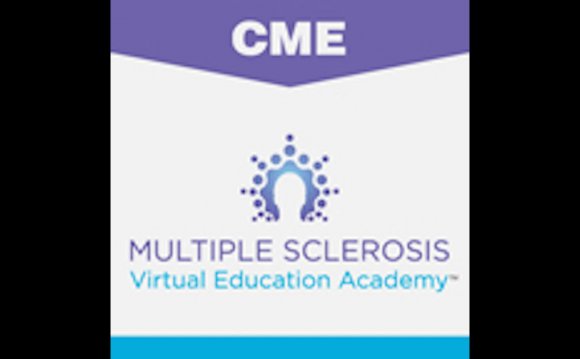

Steering Committee and Faculty
Philip B. Gorelick, MD, MPH, FACPMedical Director
Hauenstein Neuroscience Center
Saint Mary’s Health Care
Professor, Translational Science and Molecular Medicine
Michigan State University
Grand Rapids, MI
Disclosures:
Contracted Research (paid to institution): Lundbeck
Professor and Chair
Department of Emergency Medicine Mount Sinai School of Medicine
New York, NY
Disclosures:
Consultant: AstraZeneca, Banyan Biomarkers, Bristol-Myers Squibb, Pfizer, TEVA
Division Director and Professor
Division of Emergency Medicine
Department of Medicine
Professor, Department of Neurosciences
Associate Vice Chair for Research Department of Medicine
Medical University of South Carolina
Charleston, SC
Disclosures:
Contracted Research: Genentech
Nurse Planners
Amy Groenhout, RN
Disclosures: No relevant financial relationships to disclose.
Barbara Niedz, PhD, RN, CPHQ
Disclosures: No relevant financial relationships to disclose.
Natalie Wilson, MS, RN
Disclosures: No relevant financial relationships to disclose.
Reviewers
Ronald A. Codario, MD, FACP, FNLA, CCMEP
Disclosures: No relevant financial relationships to disclose.
Linda Giarraputo, PA-C
Disclosures: No relevant financial relationships to disclose.
Vindico Medical Education staff report the following relationship(s):
No relevant financial relationships to disclose.
Signed disclosures are on file at Vindico Medical Education, Office of Medical Affairs and Compliance.
 Accredited by
Accredited by
| Credit Type: | CME/CNE/CE |
| Credit Amount: | 2.0 |
| Registration Required: | No |
| Estimated Time for Completion: | 2 hours |
| Fee for Activity: | There is no fee for this educational activity. |
Activity Description
Clinicians continue to debate the appropriate use of tissue plasminogen activator (tPA) in patients following acute ischemic stroke. In this activity, leading specialists from neurology and emergency medicine will review the current guidelines and inclusion/exclusion criteria for the use of tPA, clinical trials for intravenous and intra-arterial tPA, endovascular procedures, and their personal experience in a highly interactive format including case presentations that allow attendees to manage patients along with our faculty. In addition, the multidisciplinary faculty will discuss coordinating stroke care between departments and how to implement telemedicine in stroke care.
Agenda / Presentation Titles
- Determining Candidacy: Applying Inclusion and Exclusion Criteria for IV Thrombolysis - Philip B. Gorelick, MD, MPH, FACP
- Case Presentation: Putting The AHA/ASA Recommendations to Work – Early Management of AIS - Andy S. Jagoda, MD
- IV tPA or Endovascular Procedures – Assessing the Evidence - Philip B. Gorelick, MD, MPH, FACP
- Tick Tock: How Would You Treat This Patient? - Edward C. Jauch, MD, MS, FAHA, FACEP
Purpose / Learning Objectives
Upon successful completion of this educational activity, participants should be better able to:
- Utilize evidence-based inclusion and exclusion criteria when determining candidates for thrombolytic therapy in acute ischemic stroke.
- Apply established guidelines, recommendations, and clinical study findings into practice, pertaining to the safe and effective use of thrombolysis in patients who present with acute ischemic stroke post symptom onset.
- Assess the safety and efficacy of endovascular procedures versus intravenous tPA for use in early acute ischemic stroke.
Target Audience
The intended audience for this activity is neurologists, emergency physicians, internal medicine physicians, emergency and critical care nurses, neurology nurse practitioners, neurology physician assistants and other health care professionals involved in the treatment of patients with acute ischemic stroke (AIS).
Requirements for Successful Completion
In order to receive credit, participants must view the activity and complete the post-test and evaluation form. A score of at least 66% is required on the post-test in order to receive a Certificate. There are no pre-requisites and there is no fee to participate in this activity or to receive CME credit. Credit is awarded upon successful completion of the post-test and evaluation form.
Media
Internet
Conflict of Interest Policy / Disclosure Statement
In accordance with the Accreditation Council for Continuing Medical Education’s Standards for Commercial Support, all planners, teachers, and authors involved in the development of CME content are required to disclose to the accredited provider their relevant financial relationships. Relevant financial relationships will be disclosed to the activity audience.
The faculty of this educational activity may include discussions of products or devices that are not currently labeled for use by the US Food and Drug Administration. Faculty members have been advised to disclose to the audience any reference to an unlabeled or investigational use.
Accreditation Statement
CME Information:
Vindico Medical Education is accredited by the Accreditation Council for Continuing Medical Education to provide continuing medical education for physicians.
Vindico Medical Education designates this enduring material for a maximum of 2.0 AMA PRA Category 1 Credit(s)™. Physicians should claim only the credit commensurate with the extent of their participation in the activity.
CNE Information:
Vindico Medical Education, LLC is accredited as a provider of continuing nursing education by the American Nurses Credentialing Center's Commission on Accreditation.
Vindico Medical Education will provide 2.0 contact hours for nurses.
AANP Information:
This program is approved for 2.0 contact hour(s) of continuing education (which includes 0.25 hours of pharmacology) by the American Association of Nurse Practitioners. Program ID 1507335.
This program was planned in accordance with AANP CE Standards and Policies.
AAPA Information:
This program has been reviewed and is approved for a maximum of 2.0 hours of AAPA clinical Category I CME credit by the Physician Assistant Review Panel. Physician assistants should claim only those hours actually spent participating in the CME activity.

 An intraocular lens (IOL) is an implanted lens in the eye, usually replacing the existing crystalline lens because it has been clouded over by a cataract, or as a form of refractive surgery to change the eye's optical power. It usually consists of a small plastic...
An intraocular lens (IOL) is an implanted lens in the eye, usually replacing the existing crystalline lens because it has been clouded over by a cataract, or as a form of refractive surgery to change the eye's optical power. It usually consists of a small plastic...








